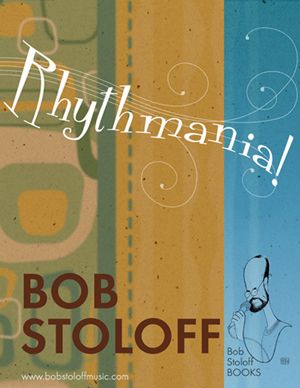All styles of traditional, contemporary pop, jazz and world music contain a nuclear composite of the three essential musical elements: rhythm, melody and harmony. While melody and harmony stimulate our emotional sensors, rhythm directly summons our physical impulses. Our bodies respond to rhythm precipitously, without thought or discrimination. We tap our feet, clap our hands, snap our fingers, or bob our heads when we hear and/or feel musical rhythms. But for those who perform music, crafting different rhythms is a skill that requires both intuition and formal study. This applies, of course, to both instrumentalists and vocalists.
While instrumentalists enjoy the luxury of being able to articulate music using external triggers such as sticks, bows, slides, valves, and keys, improving technical skills still requires a daily practice regimen with many hours of physical repetition. This is mostly to upgrade dexterity and develop muscle memory for navigating the instrument successfully. Each instrument has different intrinsic challenges derived from their various mechanical designs. The voice, however, is activated internally, by sending a controlled airstream to the larynx. The experience of singing is entirely physical and in addition to the moving parts of the larynx, vocal training involves learning how to manipulate the rib cage, diaphragm, throat, soft palate and lower jaw to best support the connection of breath and sound to the voice. Additionally, since the head and throat serve as resonance chambers, singers must learn how to physically develop tone quality, timbre and vocal colors using these devices. Essentially, a singer’s musical instrument is their body and each is naturally equipped with its own personal attributes. In spite of the physical differences, singers can easily practice rhythms the same way an instrumentalist does by using speech patterns. Consider the many lingual techniques designed to enhance the articulation of musical instruments that utilize mouthpieces. Wind players, for example, learn how to single, double, triple and doodle tongue to facilitate the execution of complicated rhythms at faster tempos. Flute and brass instruments use flutter tonguing for rhythmic effect. Saxophonists will bend, ghost or slap notes while brass players use a myriad of rhythmic ornamentations including the shake, doit, spill, flip, bend, smear, plop, gliss and fall-off. Non-wind instruments also have their share of rhythmic articulations. The strings on an electric bass can be pressed, slapped or pulled while the acoustic stringed instruments get plucked, bowed or “chipped” using a bow. All drum beats are derived from fundamental rudiment sticking patterns (called “strokes”) including the roll, diddle, flam, drag, tap and ratamacue to mention a few. In effect, instrumentalists learn how to “speak” through their instruments using a rhythmically diverse language. It is interesting to note that most of these articulations are taught through demonstration but also described vocally using syllables to communicate both the attack, sustain and rhythmic design of the sound. The language of musical instruments, therefore, is a perfect tool for vocal training.
In spite of the physical differences, singers can easily practice rhythms the same way an instrumentalist does by using speech patterns. Consider the many lingual techniques designed to enhance the articulation of musical instruments that utilize mouthpieces. Wind players, for example, learn how to single, double, triple and doodle tongue to facilitate the execution of complicated rhythms at faster tempos. Flute and brass instruments use flutter tonguing for rhythmic effect. Saxophonists will bend, ghost or slap notes while brass players use a myriad of rhythmic ornamentations including the shake, doit, spill, flip, bend, smear, plop, gliss and fall-off. Non-wind instruments also have their share of rhythmic articulations. The strings on an electric bass can be pressed, slapped or pulled while the acoustic stringed instruments get plucked, bowed or “chipped” using a bow. All drum beats are derived from fundamental rudiment sticking patterns (called “strokes”) including the roll, diddle, flam, drag, tap and ratamacue to mention a few. In effect, instrumentalists learn how to “speak” through their instruments using a rhythmically diverse language. It is interesting to note that most of these articulations are taught through demonstration but also described vocally using syllables to communicate both the attack, sustain and rhythmic design of the sound. The language of musical instruments, therefore, is a perfect tool for vocal training.
Because vocalists need to learn how to “play” their voices, it is obvious to me that instrumental pedagogy offers the best and most comprehensive rhythmic training. Interpreting rhythms this way becomes a richer, more satisfying and comprehensive musical experience for singers who have never played a musical instrument before. But singers enjoy the luxury of being able to emulate the timbres of musical instruments by shaping vowels and changing resonances. Bobby McFerrin’s ability to do this was the backbone of his long and successful career as a theatrical solo a cappella improviser. McFerrin’s work, along with other contemporary vocalists like Rhiannon and myself, kindled vocal percussion, body drumming, spontaneous group improvisation and circle songs.
Rhythmania! is a collection of patterns, grooves and etudes written for vocalists who want to improve their rhythmic vocabulary for the purpose of performing contemporary jazz and popular music. Each exercise contains a variety of syncopated figures with prescribed “Instru-vocal” syllables that correspond to the articulations normally used by instrumentalists. Additionally, these techniques will help singers “lock in” to rhythm section grooves, double or harmonize parts in a studio or live session and any other musical activities that demand rhythmic precision.